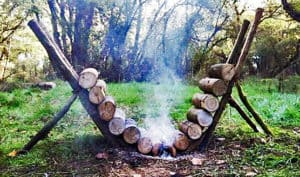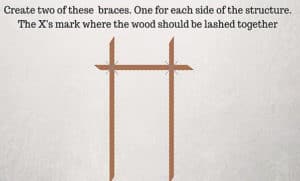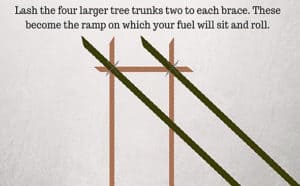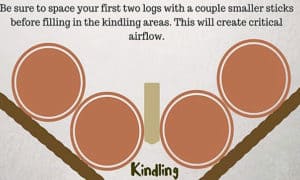Our Ancestors’ Fascinating Journey Part VIII
The Year of Our Lord 1637.
Our ancestors were not staying at the Holiday Inn during their travels around the Cape. They were surviving in the elements. Our ancestors forged on against the worst the Cape Cod climate could throw at them. On this rough road self-reliance was everything.
It took a great deal of ingenuity to battle the elements, the wildlife, the germs and whatever else as they traveled on their way. All their skills learned in England and some they learned as they traveled were required when surrounded by miles of hostile wilderness. They paid special attention to the survival basics, such as, fire, water, shelter and food.
There were no matches. To sustain fire, wood was buried in hot ashes. Sometimes this method failed. It was serious to be without fire. “Borrowing fire” from a neighbor was sometimes necessary. Sometimes two pieces of wood were rubbed together until they blazed (a hard job). Often gunpowder was mixed with fine kindling and a spark from a flint rock and a steel ignited the kindling.
The ingenuity of our ancestors resulted in the self-feeding fire. It was their solution to getting some sleep at night and not having to constantly tend to a campfire.
This method of creating a long-lasting fire utilizes the power of gravity to feed the fire fresh logs. Logs were placed on two ramps using gravity to roll the logs into one another. Two braces elevated the ramps. Water-soaked rawhide strips or string bound the ramps and braces.

If you want to try a self-feeding fire here is what is needed:
- 4 small tree trunks or large straight tree branches (about 5 feet. in length);
- 4 branches or smaller trees that will support the larger branches;
- 2 branches about 2 feet long that will be used in your bracing structure;
- 8 large 3ft long sections of tree trunk, preferably hardwood;
- 2 or more pieces of hardwood to space your starting logs;
- 20 yards of paracord;
- Plenty of dry kindling; and
- A shovel.
Gather your materials to build the structure itself and make sure that the materials you gather or cut down are sturdy and strong as this structure will be holding heavy weight. Look for similar sized tree trunks or freshly fallen trees to create the V shape that will be filled with the eight 3 feet long sections of a tree trunk for the fire.
How to Build the Self-Feeding Fire
Start by creating the braces using the four smaller branches and the 2 feet branches. They will be lashed together with your paracord.




To light the fire, place your kindling in the area marked kindling above. Do not remove the spacers that you have put in place. Allow them to burn away as well. Success with your kindling will mean that your first two logs are burning tight against one another. It may not be a roaring flame but there will be an assuring orange glow that will burn for hours.
If your fire smolders out before the main logs start burning all is not lost. The quick fix is to space your logs again with a couple of fresh pieces of hardwood and fill the areas with new kindling. We are not pioneers nor do we face their challenges, so if you are really struggling help this thing along with accelerant.
The self-feeding fire will easily burn for 8+ hours allowing you a great sleep without stoking flames and adding logs. This forgotten skill is a testament to what our ancestors were able to derive from adversity. It is not as easy as throwing together a quick campfire but when you wake up to the sun creeping over the horizon and a fire still burning for breakfast, it will all be worth it.
Tips:
- Build your base of sturdy materials and use plenty of paracord;
- Be sure to bury the first six inches of the legs of your structure that touch the ground;
- The initial stages of the fire will be all about oxygen, provide airflow;
- Use several sizes of kindling and distribute through the length of the first two log; and
- When in doubt use an accelerant!
—o-O-o—
JMN
